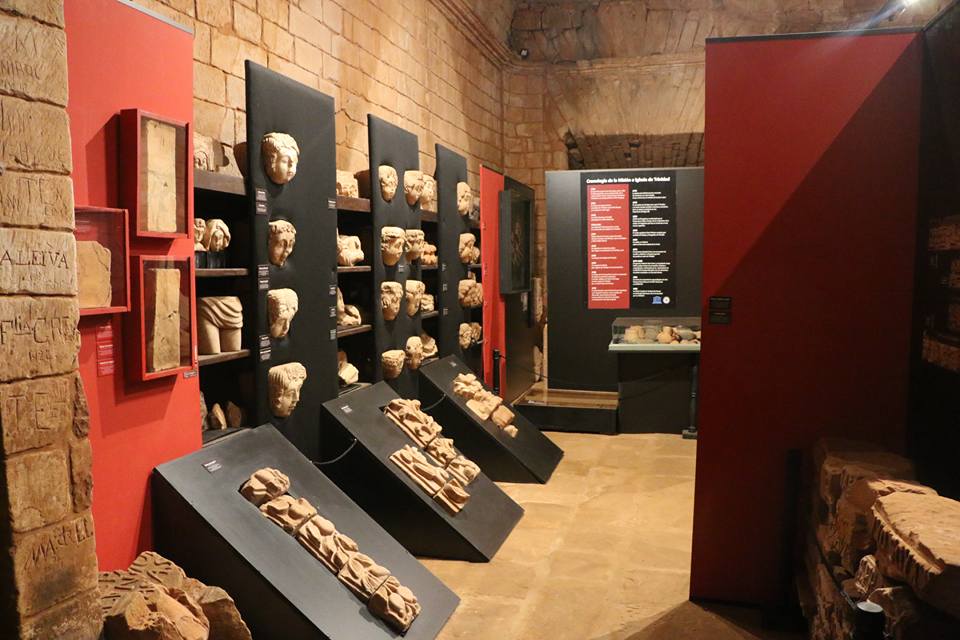

Toda la riqueza visual e histórica que ofrece el Museo es fruto de las excavaciones arqueológicas de las pasadas décadas, que fueron depositados en la sacristía del templo y que hoy están expuestos para el público en general.
Permite al visitante comprender la importancia histórica y artística de la histórica Iglesia de Trinidad del Paraná dentro del contexto arquitectónico y cultural paraguayo.
El sitio cuenta con dos museos: El Museo Jesuítico con tallas en piedra, nichos, retablos; y el Museo de Sitio, al costado del templo, con piezas esculpidas en piedras, restos de ángeles y santos, y partes de algún friso con diseño de flores y frutas de la vegetación característica de la región.
La Reducción de la Santísima Trinidad del Paraná presenta una majestuosidad y grandeza que simboliza el culmen del barroco, y está caracterizada por el reemplazo de los horcones y armazones de madera por el uso de sillares de piedra, y lo más destacado es sin duda, la increíble riqueza y variedad de sus restos ornamentales esculpidos en piedra. El arquitecto de la iglesia principal fue el jesuita Juan Bautista Prímoli, quien también se encargó del diseño de toda la Reducción.
La construcción está decorada profusamente con símbolos y signos que, si el visitante lo observa con detenimiento, el tiempo de un día, se hace breve, para contemplarlos en su total magnitud. El fabuloso templo tiene como aspecto diferenciador y es que en su nave central se hallan sepultados los Corregidores Guaraníes, al estilo de la alta nobleza europea.
Santísima Trinidad del Paraná forma parte de las ocho Misiones fundadas por los religiosos de la Compañía de Jesús entre los años 1609 y 1768 en territorio paraguayo, llegando a tener en el año 1728 una población de más de 3000 indígenas guaraníes.


All the visual and historical wealth that the Museum offers is the result of the archaeological excavations of the past decades, which were deposited in the sacristy of the temple and are today exposed to the general public. It allows the visitor to understand the historical and artistic importance of the historic Church of Trinidad del Paraná within the Paraguayan architectural and cultural context.
The site has two museums: The Jesuit Museum with stone carvings, niches, altarpieces; and the Site Museum, next to the temple, with pieces sculpted in stones, remains of angels and saints, and parts of a frieze with a design of flowers and fruits of the typical vegetation of the region.
The Reduction of the Holy Trinity of Paraná presents a majesty and grandeur that symbolizes the culmination of the Baroque, and is characterized by the replacement of the wooden posts and frameworks by the use of stone blocks, and the most outstanding thing is undoubtedly the incredible richness and variety of its ornamental remains carved in stone. The architect of the main church was the Jesuit Juan Bautista Prímoli, who was also in charge of the design of the entire Reduction.
The construction is profusely decorated with symbols and signs that, if the visitor observes it carefully, the time of a day becomes short, to contemplate them in their full magnitude. The fabulous temple has a differentiating aspect and it is that in its central nave the Guaraní Corregidores are buried, in the style of the high European nobility.
Santísima Trinidad del Paraná is part of the eight Missions founded by the religious of the Society of Jesus between 1609 and 1768 in Paraguayan territory, reaching in 1728 a population of more than 3,000 Guarani indigenous people.
Horarios de Atención: Lunes a Domingos de 08:00 hs a 19:00 hs.
Contacto: +595 985 772 803
Acceso: 25.000 guaraníes para los extranjeros, 15.000 para los paraguayos y 5.000 para los habitantes de Itapúa.
Facebook: Misión Jesuitica Santisima Trinidad
Email: trinidad@senatur.gov.py
Dirección: Calle Acceso a las Ruinas – Misión Jesuítica Guaraní de Trinidad.
Ciudad: Trinidad
Departamento: Itapúa
